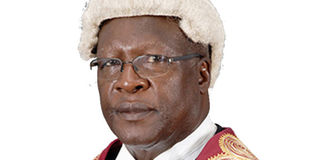Government should review ban on hiring judges

Early this week, President Museveni announced a ban on recruitment of more judges, a move that has kicked up a disquiet mainly in the legal circles. The President instead advised that it is better for government to better remunerate the available fewer officers than recruite more.
The Judiciary statistics as presented by the Chief Justice at the just concluded 21st Annual Judges’ Conference, calls for extra ordinary solutions to try to clear the existing case backlog.
For example, it would take every High Court to hear 101 cases per month, each has to hear more than five cases per day and even give their judgments on that day, a workload that is humanely impossible.
There are currently 52 High Court judges out of the approved 82, meaning they are less by 30. At the magistrate level, the workload stands at 66,885, implying that each magistrate has to hear 1,520 cases per annum requiring a disposal of 127 cases per month per judge or six cases per day.
Equally, the Court of Appeal/Constitutional Court is struggling with case backlog of more than 7,000 cases amid the relocation of several justices to international, regional and national assignments. It is only the highest court in the land (Supreme Court) that is fully constituted and it has less case backlog.
Given the aforementioned statistics, observers project that it may take more than 30 years for the existing judges to clear the current workload and at the same time, pray that no new cases are filed in that period.
The President’s ban on recruitment will mostly affect the citizens who are the final consumers of the justice. This is because the ban will translate into cases taking longer to be heard and determined in court, a scenario that may fuel mob action in society.
Serious investors too might avoid investing in a country whose justice system takes donkey’s years to decide a case, especially in commercial disputes.
Singapore has managed to develop tremendously because it prioritised its Judiciary, a move that saw it attract serious investors. For a Judiciary to be vibrant, the government should release resources and recruit more judges to match the approved staffing structure of each court - 82 for High Court, 15 for Court of Appeal and 11 for Supreme Court. For the lower court, the government should recruit 56 more judges to match the approved staffing structure.
The recruitment should be followed by better pay given that even if you facilitate better the current few judicial officers, they will never clear the existing huge workload.
After recruiting more judicial officers and giving them better facilitation, including higher pay, we can then have the moral authority to criticise them for taking long to deliver justice.




